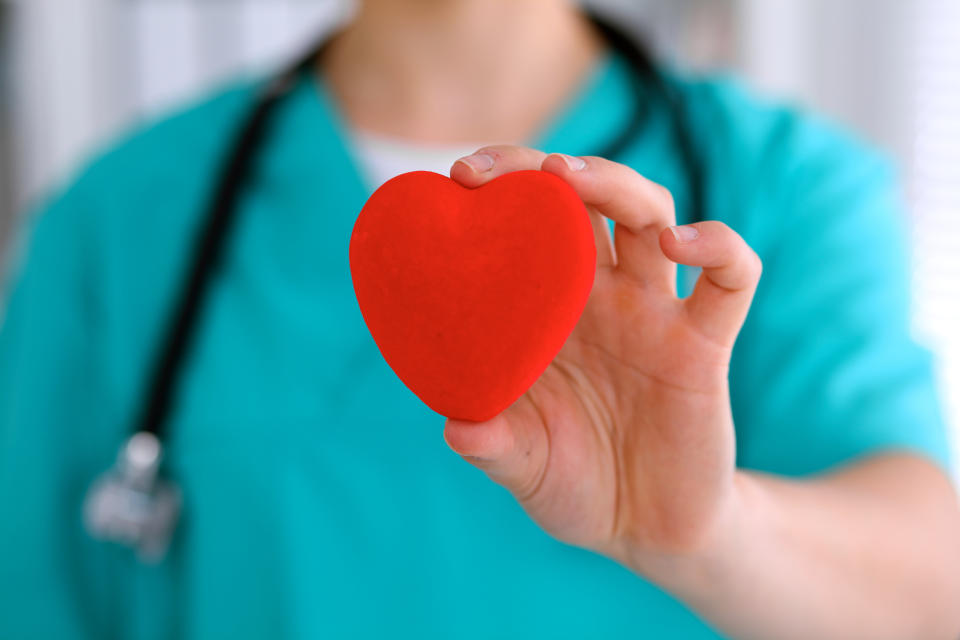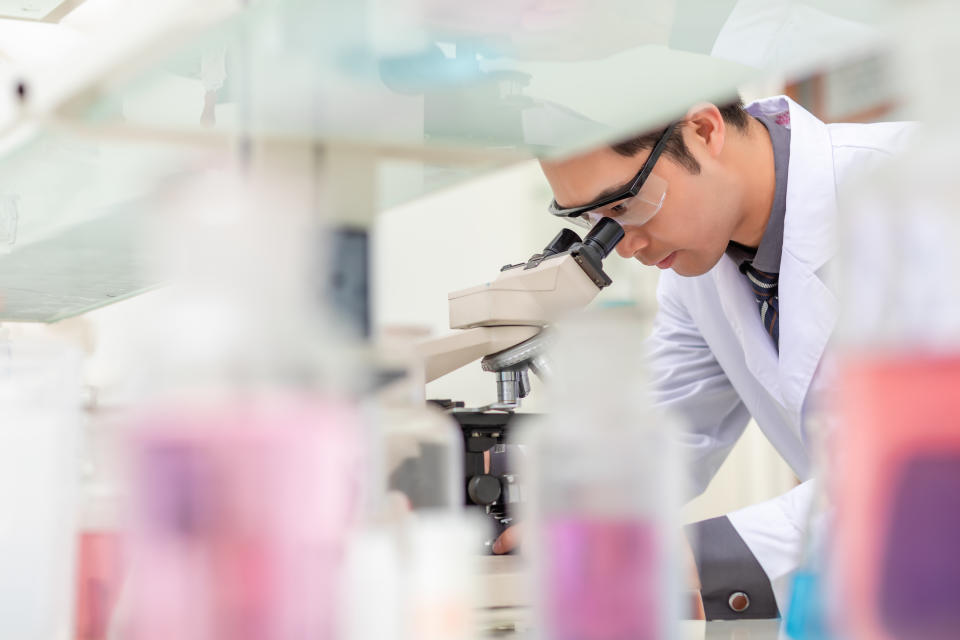Functioning miniature human heart created by scientists to help study cardiovascular disease

A miniature human heart has been created in a laboratory for the first time.
Scientists from Michigan State University made the model, complete with functioning chambers and vascular tissue, to enable them to better understand how the vital organ develops.
Heart disease is a leading cause of death, triggering a third of fatalities in the US alone.
The scientists hope their model will particularly help them understand congenital heart defects – conditions that impact how the vital organ functions, affecting around 1% of all live births.
Read more: Heart disease could be prevented in the womb, study suggests
Powerful model ‘to study all kinds of cardiac disorders’
“These mini hearts constitute incredibly powerful models in which to study all kinds of cardiac disorders with a degree of precision unseen before,” said study author Dr Aitor Aguirre.
The so-called “human heart organoids” were created via a stem cell framework that mimics embryonic and foetal development.
Stem cells are basic cells that can change into a more specialised form of cell.
Read more: Eating chocolate more than once a week wards off heart disease
“Organoids, meaning ‘resembling an organ’, are self-assembling 3D cell constructs that recapitulate organ properties and structure to a significant extent,” said lead author Yonatan Israeli, a graduate of Dr Aguirre’s laboratory.
Volunteers donated stem cells, which were then developed under embryonic-like conditions in a petri dish into a functional mini heart.
It took just six days for them to start beating. By day 15, they were mostly spherical and up to 1mm across.
Read more: 'Broken heart syndrome' on the rise during coronavirus pandemic
“This process allows the stem cells to develop, basically as they would in an embryo, into the various cell types and structures present in the heart,” said Dr Aguirre.
“We give the cells the instructions and they know what they have to do when all the appropriate conditions are met.”
The organoids followed the cardiac embryonic development process in real time, allowing the scientists to study the natural growth of a foetal heart.
The research has been published preliminarily on the website bioRxiv and is yet to appear in a peer-reviewed journal.

‘A great step forward’
The scientists have claimed they were able to create numerous models at once, relatively easily.
Existing tissue engineering technologies tend to be expensive, labour intensive and tricky to scale up, they added.
Limited access to a developing heart also stunts research into the organ’s defects.
Experts were therefore previously confined to mammalian models, donated foetal remains and laboratory studies to gauge how the organ functions and develops.
“Now we can have the best of both worlds, a precise human model to study these diseases – a tiny human heart – without using foetal material or violating ethical principles,” said Dr Aguirre.
“This constitutes a great step forward.”
The scientists plan to use the model to better understand how the human heart develops.
“In the lab, we are currently using heart organoids to model congenital heart disease – the most common birth defect in humans affecting nearly 1% of the newborn population,” said Dr Aguirre.
“With our heart organoids, we can study the origin of congenital heart disease and find ways to stop it.”
The scientists are also working on improving their model.
“The organoids are small models of the foetal heart with representative functional and structural features,” said Israeli.
“They are, however, not as perfect as a human heart yet. That is something we are working toward.”
The scientists hope the model will one day enable researchers to study other heart-related disease, from chemotherapy-induced cardiotoxicity to the effect of gestational diabetes on a foetus’ cardiovascular system.
This comes as scientists from Fuwai Hospital, China, claimed heart disease could one day be diagnosed via a selfie.
Certain facial features are already associated with an increased risk of the condition, like ear lobe creases and yellow deposits of cholesterol beneath the skin, usually around the eyelids.
A study, published in the European Heart Journal, suggests a computer algorithm can detect coronary artery disease after analysing four photographs of a patient’s face.


